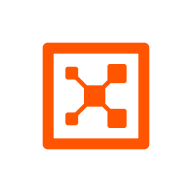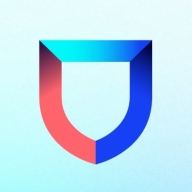


Illumio and Lacework FortiCNAPP are cybersecurity solutions. Illumio has an edge in user support and ease of deployment, whereas Lacework FortiCNAPP excels due to its robust feature set.
Features: Illumio offers real-time threat visibility, micro-segmentation, and an application-centric security approach. Lacework FortiCNAPP provides cloud-native security tools, automated compliance, and advanced threat detection.
Room for Improvement: Illumio could improve data analytics, expand integration capabilities, and enhance reporting flexibility. Lacework FortiCNAPP might need to simplify setup procedures, enhance user interface design, and improve customization options.
Ease of Deployment and Customer Service: Illumio is praised for its straightforward deployment and responsive customer support, simplifying the onboarding experience. Lacework FortiCNAPP, while requiring more complex integration, offers detailed guidance and extensive documentation, making it manageable for users.
Pricing and ROI: Illumio provides a cost-efficient setup with solid ROI through scalable security models. Lacework FortiCNAPP may have higher setup costs but offers significant ROI due to extensive security features and threat management effectiveness.
| Product | Market Share (%) |
|---|---|
| SentinelOne Singularity Cloud Security | 3.7% |
| Illumio | 6.4% |
| Lacework FortiCNAPP | 2.3% |
| Other | 87.6% |



| Company Size | Count |
|---|---|
| Small Business | 44 |
| Midsize Enterprise | 21 |
| Large Enterprise | 53 |
| Company Size | Count |
|---|---|
| Small Business | 3 |
| Midsize Enterprise | 1 |
| Large Enterprise | 7 |
| Company Size | Count |
|---|---|
| Small Business | 4 |
| Midsize Enterprise | 4 |
| Large Enterprise | 3 |
SentinelOne Singularity Cloud Security offers a streamlined approach to cloud security with intuitive operation and strong integration capabilities for heightened threat detection and remediation efficiency.
Singularity Cloud Security stands out for its real-time detection and response, effectively minimizing detection and remediation timelines. Its automated remediation integrates smoothly with third-party tools enhancing operational efficiency. The comprehensive console ensures visibility and support for forensic investigations. Seamless platform integration and robust support for innovation are notable advantages. Areas for development include improved search functionality, affordability, better firewall capabilities for remote users, stable agents, comprehensive reporting, and efficient third-party integrations. Clarity in the interface, responsive support, and real-time alerting need enhancement, with a call for more automation and customization. Better scalability and cost-effective integration without compromising capabilities are desired.
What are SentinelOne Singularity Cloud Security's standout features?SentinelOne Singularity Cloud Security is deployed in industries needing robust cloud security posture management, endpoint protection, and threat hunting. Utilized frequently across AWS and Azure, it assists in monitoring, threat detection, and maintaining compliance in diverse environments while providing real-time alerts and recommendations for proactive threat management.
Illumio Zero Trust Segmentation is a cloud and data center security solution that helps stop breaches from spreading across hybrid and multi cloud IT environments. The solution is designed to stop ransomware, contain cyber attacks, and reduce risk. With Illumio Zero Trust Segmentation, users can understand relationships and communications to map exposure risk of systems and data, identify the right security posture and secure applications through least-privilege policies, and ensure a Zero Trust security posture.
Illumio Zero Trust Segmentation Features
Illumio Zero Trust Segmentation has many valuable key features. Some of the most useful ones include:
Illumio Zero Trust Segmentation Benefits
There are many benefits to implementing Illumio Zero Trust Segmentation. Some of the biggest advantages the solution offers include:
Reviews from Real Users
Illumio Zero Trust Segmentation is a solution that stands out when compared to many of its competitors. Some of its major advantages are that it has a good auto policy writing feature, great mapping, and useful monitoring.
Shashi, Technical Consultant at a financial services firm, explains which features she really likes. “The auto policy writing is great. The feature will give you the option of inbound-outbound traffic. The Explorer allows you to know the traffic between source and destination. The illumination definitely stands out. Mapping is great. The application group mapping is useful.”
The solution has “helpful support, useful monitoring, and high availability,” according to Edwin L., Security Architect at MGM.
Lacework FortiCNAPP provides robust cloud security, combining vulnerability management and multi-cloud insight with user-friendly controls, machine learning detection, and compliance support.
Lacework FortiCNAPP specializes in cloud security by merging machine learning anomaly detection with agent-based vulnerability management to offer detailed alerts and compliance reports. Its comprehensive approach allows continuous monitoring across AWS and Kubernetes, providing insights from an attacker's perspective. The platform offers automation and seamless Slack integration, facilitating collaborative and efficient cloud security management. Users value its ability to handle multi-cloud environments and scan IAC scripts, configurations, and compute nodes across AWS and GCP.
What are the key features?Organizations across sectors leverage Lacework FortiCNAPP for cloud security, focusing on compliance, security posture, and vulnerability management. It is widely used for monitoring AWS and Kubernetes environments, scanning IAC scripts, configurations, and securing compute nodes. It supports multi-cloud security posture management and log ingestion, enabling companies to maintain strong cloud infrastructures without dedicated security layers.
We monitor all Cloud Workload Protection Platforms (CWPP) reviews to prevent fraudulent reviews and keep review quality high. We do not post reviews by company employees or direct competitors. We validate each review for authenticity via cross-reference with LinkedIn, and personal follow-up with the reviewer when necessary.